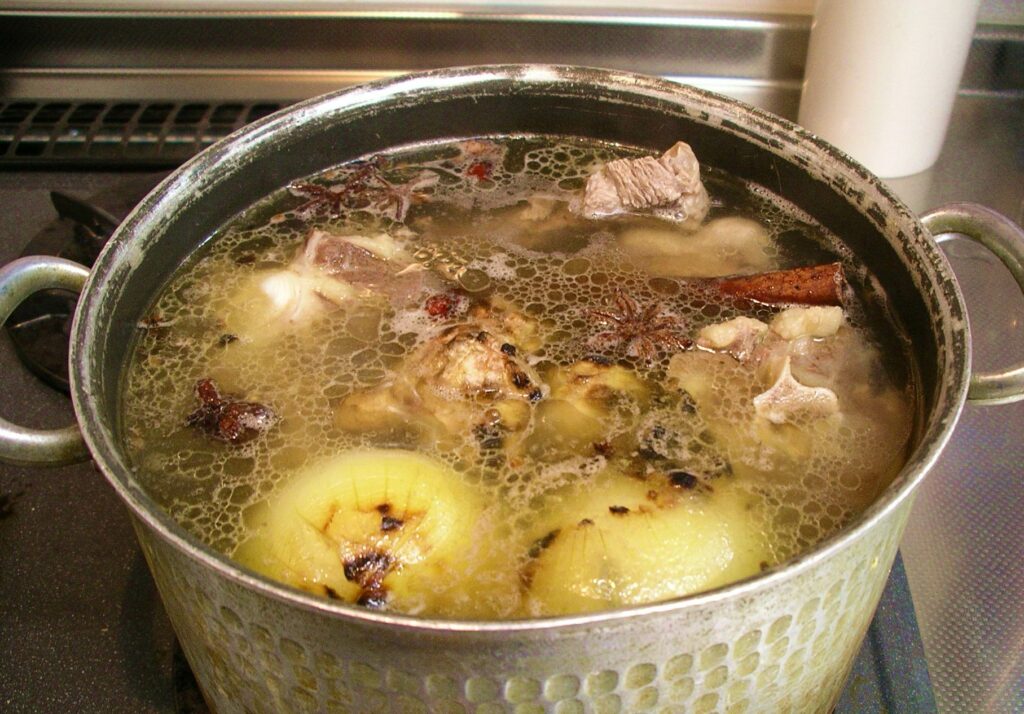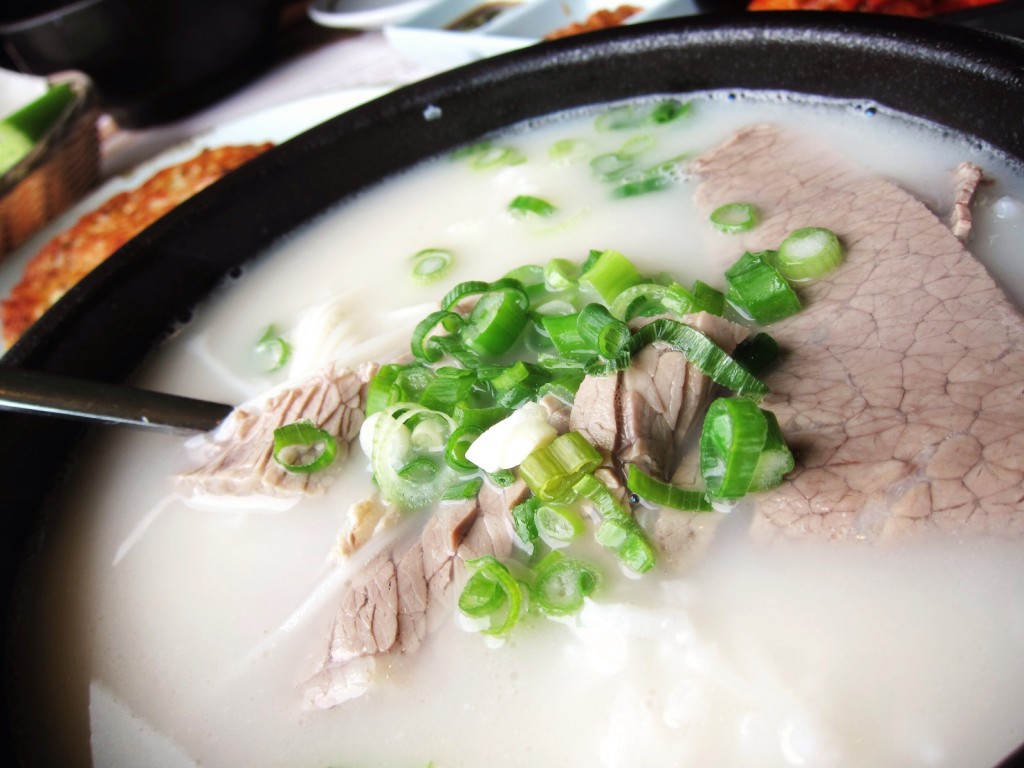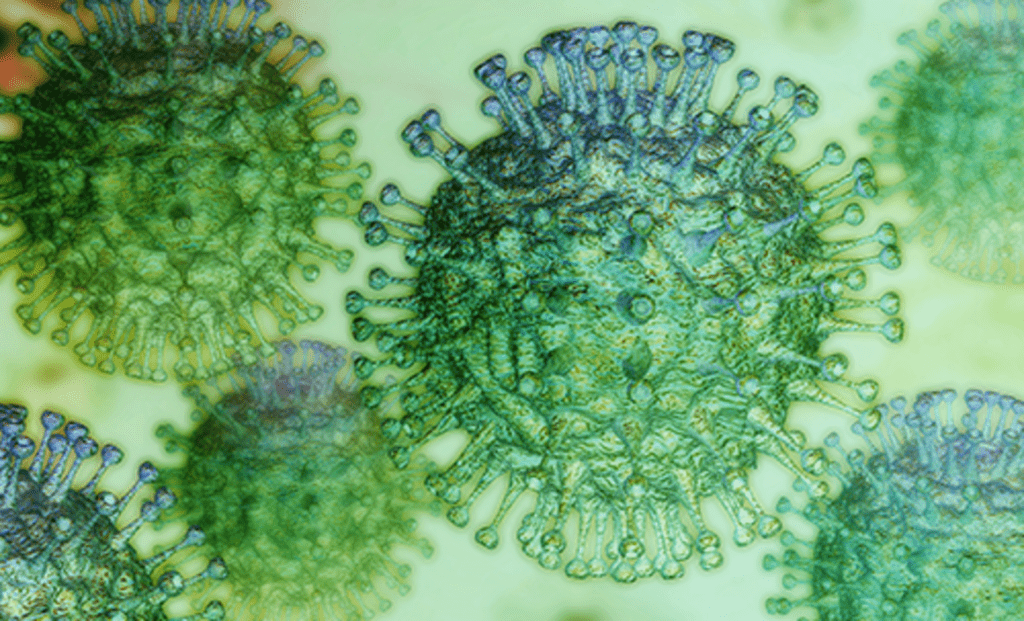Shedding some light on bone broth

I’ll be the first to admit that I’m a little out-of-touch when it comes to popular trends, particularly in the field of natural health and wellness. Partly this is because I’m too busy, but it’s also because my inattention is quite deliberate. I have never found much solace in the crush of the crowd, preferring wide open spaces – both physically and conceptually – and the opportunity to connect with others in a thoughtful fashion. In contrast, most popular trends are planted and watered by marketers, who use advertising and social media as fertilizer to pray upon the public’s hopeful naiveté, spinning the mystery and exoticism of products and practices far removed from their original context. A good example of this are many of the superfoods that I recently reviewed on my blog. But some popular trends arise from grassroots practices, like the goji (gouqi) berry (Lycium barbarum), long used in Chinese medicine to nourish yin, to benefit the eyes, liver, blood, and fertility. What the marketers that push goji berry fail to provide, however, is the proper context for its use. Thus dried goji berries shouldn’t be thrown into a smoothie, or eaten by the handful as a quick snack, but for most purposes, display their true benefit when used as an ingredient in a nourishing medicinal soup stock. Used by millions of Chinese grandmas for thousands of years, the context for the use of goji berry is well-established, as is the case for many of the trendy “superfoods”. But sometimes the proper context can be hard to discern; and, may require deeper investigation.
Like the goji berry, another trendy food is bone broth, becoming so popular as to capture the attention of the New York Times, touted as the new “superfood” that’s being served up at “broth bars” across the nation. Although its rise in popularity was predictable, I am somewhat bemused by all this attention, as bone broths are something I have employed as a therapeutic strategy for decades, drawing from their long history of use in traditional medicine. Unlike many superfoods, however, bone broth is a normal constituent of the diet for most traditional peoples. My grandparents didn’t eat raw cacao or drink hydrogen peroxide, but they did make bone soup on a regular basis – although it wasn’t just bones, but as I advise my patients to do, also included other ingredients such as the vegetable peelings you might otherwise compost. For my Depression-era grandparents, this was done not so much for health considerations, but for practical and economic reasons. After all, when you buy meat and vegetables, you are also paying for that which you might otherwise discard, which amounts to a considerable volume. This type of homemade soup is thus not only good for you, but it helps save you money.
However, just because something is good for you doesn’t mean that it is necessarily safe to consume in large volumes. It is clear that when some people get hold of an idea, particularly if it has been popularized, they take it to its logical extreme, operating on the axiom that “more is better”. We see this issue with antioxidants, including supplements and novel sources such as the avocado pit, which are actually kind of toxic when consumed in higher doses. So it wouldn’t be any surprise to me to learn that some people might be over-consuming bone broth, and in particular, the long-boiled bone broths. For example, in researching my 2011 book Food As Medicine, I found one reported case in the literature of a fellow in India suffering from hypervitaminosis D, caused by consuming excessive levels of bone broth on a daily basis. According to the case report, this fellow was consuming up to two liters of long-boiled bone broth on a daily basis over six month period, but once he discontinued the practice, his health returned to normal. Apart from this case report, however, I am not aware of any other published cases of an adverse reaction to bone broth.

Thus it was something of a surprise to me when a student asked me about the validity of a claim making the rounds that bone broth might be kind of toxic. The source of this charge suggests that the toxicity of bone broth is related to the fact that it contains proportionally higher levels of glutamic acid than other amino acids, and that the excessive consumption of glutamic acid in bone broth can cause a number of health issues, including “brain fog, migraine headaches, dramatic mood swings, stimming, and nervous tics”, and is contraindicated in disorders such as “ADD, ADHD, and Autism Spectrum Disorders.” The basis of this assertion is that if you suffer from leaky gut, the high amounts of glutamic acid in the broth are taken up across a “leaky” blood brain barrier (BBB), where it acts as an excitatory neurotoxin in the brain.
Before we get down on glutamic acid, however, let’s remember that it serves many functions, for example, as an important intermediate in cellular metabolism (i.e. as α-ketoglutarate), and as a component of the urea cycle required for the excretion of ammonia. Considering the number of metabolic processes that glutamic acid plays a role in, it should come as no surprise that it is normally found in high concentrations in the blood, muscles, and cerebrospinal fluid, representing upwards of 60{6921d8d6427042db5aa411e0d401cbd175b775e2ec65ab7940ca136572bc3362} of the free amino acids found in the body.
Most glutamic acid in the body exists in its oxidized form as glutamate, in which one atom of hydrogen is removed from its side chain. From glutamate, the body in turn can synthesize glutamine, in which the carboxyl side chain of glutamic acid is replaced with a functional amine group. As glutamate, glutamic acid is one of the most abundant molecules in the brain, where it plays a role as an excitatory neurotransmitter, important in cognitive functions such as learning and memory, playing a role in the formation of new synapses in the brain.
Both a deficiency and an excess of glutamate, however, has been implicated in disease. For example, a relative deficiency of glutamate has been implicated in chronic depression, whereas excessive levels play a role in neurodegenerative diseases such as cerebral ischemia (stroke), autism, and epilepsy. The dualism behind the biological activity of glutamate is further evidenced by the fact that it serves as the precursor for the synthesis of gamma-aminobutyric acid (GABA), which is an inhibitory neurotransmitter that counters the excitatory activity of glutamate.

The concept that excess glutamate has neurotoxic properties stems from early experimental animal studies that used very high doses of glutamate injected into the body. Further research demonstrated, however, that the source of glutamate is likely the injured brain tissue itself, such as what happens in stroke, rather than from excessive levels of dietary glutamate flooding across the BBB. Even when very large amounts of glutamate are given orally it has been shown that the plasma glutamate concentration tends to remain stable, and does not change unless raised artificially (e.g. by subcutaneous injection). This is because much of the dietary glutamic acid is metabolized as a source of energy by intestinal cells, rather than being absorbed. Despite this, most clinical studies do suggest that neurological disorders such as autism are often characterized by an elevation of plasma glutamate, coupled by a relative decrease of plasma glutamine.
While the exact cause is unclear, this imbalance suggests (among others things) a deficit of the enzyme glutamine synthetase that catalyzes the conversion of glutamate to form glutamine. In the brain, most of the glutamine synthetase is found in specialized cells called astrocytes, which serve to protect neurons against excitotoxicity, as well as support the function of the BBB. Glutamine synthetase is used by astrocytes to metabolize nitrogen, catalyzing the condensation of glutamate and ammonia to form glutamine. The ammonia in large part is derived from the catabolism of dietary proteins, and if its production exceeds the liver’s capacity to deal with it, the excess ammonia is released systematically. Once liberated into circulation, the ammonia freely diffuses across the BBB into the brain, where it has a number of toxic effects, promoting the release of glutamate to induce excitability (e.g. irritability, hyperactivity, aggression), causing astrocytes to swell and increase intracranial pressure. The accumulation of ammonia also appears to result in a redistribution of cerebral blood flow from cortical to sub-cortical structures, impairing the executive functions of the brain, and interfering with the uptake, storage and release of various neurotransmitters. But while elevated glutamate may be a characteristic of certain neurological diseases such as autism, it doesn’t relate to the excessive dietary consumption of glutamic acid, but to other factors, including disordered amino acid metabolism, impairments in the urea cycle, and hepatic dysfunction. Further evidence that a hyperglutaminergic state is not related to dietary intake even with a “leaky” BBB function is evidenced in experimental animal models, which have not demonstrated the increased permeability of glutamate.
Beyond the issue of glutamate, autism and other neurological diseases such as epilepsy are also characterized by autoimmune factors, such as the production of glutamate receptor antibodies. These antibodies bind to and activate glutamate receptors in the brain and induce inflammation, the resultant brain damage explaining the cognitive, behavioral, and psychiatric abnormalities seen in diseases such autism, epilepsy, and schizophrenia. Once again, rather than these disorders being related to the excessive consumption of naturally occurring glutamic acid in diet, an amino acid we already consume in abundance, the emerging picture for the pathological role of glutamate and its receptors is far more complex. And, given the relationship between leaky gut, autoimmunity and neurological disease, it makes sense to use bone broth to restore the health of the gastrointestinal epithelium by supplying a natural abundance of glutamic acid.

Note the use of words “natural abundance” at the end of the last paragraph. We have already established that in its various forms, glutamic acid is naturally abundant in the body, and is also abundant in the protein-rich foods we eat. There appears to be an empirical difference, however, between the naturally occurring L-glutamic acid bound up in food proteins, versus that found in monosodium glutamate (MSG). Linked years ago to Chinese Restaurant Syndrome, there is consistent evidence in human clinical trials that MSG can cause headaches, skin inflammation, and general symptoms of intolerance, validating cause for concern, particularly in infants and those suffering from neurological illness.
Originally extracted from kombu in 1907 by a Japanese chemist, MSG is produced by three different methods. One method requires the acid hydrolysis of wheat gluten, yielding free L-glutamine along with small amounts of free D-glutamic acid and pyroglutamic acid. Under these conditions, however, amino acids undergo a Maillard reaction, resulting in the production of carcinogenic mono- and dichloropropanols (Taylor and Linforth 2009: 151). Another method to produce MSG that was used up until the mid-1970s, is the direct synthesis of MSG from acrylonitrile, which itself is a toxic, cancer-causing chemical. Nowadays, most MSG is fermented by genetically-modified bacteria such as Corynebacterium glucamicum and E. coli from a slurry of molasses and ammonia. Despite public safety concerns, MSG is still found in a huge range packaged foods, including bullion cubes – but the latter cannot be equated with homemade bone broth. The free glutamate in MSG, regardless of how it was produced, is not the same thing and nor does it appear to have the same biological effects as the natural, protein-bound L-glutamic acid found in bone broth. Let’s make sure not to confuse them.
So, is bone broth contraindicated in neurological disease? No, I don’t think so. I sometimes recommend it for this purpose as part of a holistic protocol, and I haven’t noted any problems or issues in 20 years of clinical practice – not unless there is a pre-existing allergy or sensitivity, e.g. people with dairy issues that are intolerant to beef bone broth. Beyond this, if there are issues with bone broth, it’s likely due to weak digestion, consuming too much, too often, or in improper combinations. In Ayurveda, various types of broths are mentioned, and all can be classified on the basis of the dhatu system. According to this schemata, bone (asthi) is more biologically dense than meat (mamsa), and thus bone soup (asthi rasa) is that much harder to digest than meat soup (mamsa rasa). To accommodate this heavy quality, bone broth should be prepared with aromatic, pungent, and salty flavors, adequately diluted, and served warm. We can’t forget that this broth is an extraction of bone, the physical structure of another living animal, and in this regard is a rarified and special substance. Think too about context: just how much and how often would traditional peoples be slaughtering their stock, just so they could be sucking down mugfuls of thick, gelatinous long-cooked bone broth on a regular basis? The same question too should be asked about the consumption of other rarified substances, like cod liver oil.
As with all things, it’s important to have the proper context, be moderate in action, and listen to your body. Whatever else can be said, there is no substitute for this wisdom.







Do you have suggestions for a balanced Bone Broth recipe?
Hi Lisa – please see: http://www.foodasmedicine.ca/2012/soup-stock/
So how much bone broth do you recommend per day/week/month etc.?
For patients that need it, I suggest 1-2 cups daily.
Thanks for you reply. How would one know if they need it? Is it something you would take consistently or cycle on and off of?
I came across your blog because I have been interested in gaining the health benefits of bone broth but cautious because of an existing neurological issue. I attempted to make bone broth last month and got very ill from the smell of it. I can’t describe it but my body truly felt like I had gassed my home with poison. Needless to say, I didn’t consume it and I have been confused what went so horribly wrong, which lead to my discovery about glutamic acid.
I was on benzodiazepines long-term, taken exactly as prescribed, for PTSD. Due to developing tolerance and other health issues, I withdrew from the medication slowly over the course of a year or so. I have been off the medication for over a year at this point but my body and health have been taken through the ringer. My brain and CNS are now extremely sensitive to things that have never affected me prior. I took a supplement (passion flower) a few months ago that acted on GABA receptors and I feel like it forever changed me. I developed a 24/7 tremor and was wide awake for 5 days. I learned that I had excitoxicity from my brain firing off uncontrollably to counter the passion flower. Eventually it resolved on it’s own but after ingesting something with MSG, I had a return of the symptoms to a milder degree.
I eat meat stock regularly but not bone broth. I only ever heard good things about it but now with the knowledge about glutamic acid, I am a bit concerned of having a neurological reaction. I would love to hear more if anyone with neurological injuries are easily able to tolerate it, especially those that react to other forms.